Engineering Methods of Forest Environment Protection against Meteorological Drought in Poland
Abstract
1. Introduction
2. Water Conditions in Polish Forests
3. Small Water Retention in Forests
4. Forest Fire Protection
- Optimization of road network density and geometrical parameters of forest roads, including fire roads [81,82,83]. The high construction costs of many kilometers of forest roads cause the need to optimize their density and geometrical parameters as well, while adapting to requirements on effective and safe rescue operations.
- Tests of load-bearing capacity of forest fire roads—the existing ones, as well as the newly built ones (Figure 8). The variability of fire roads capacity parameters is still significant and in many cases insufficient; this applies first of all to dirt road surfaces and roads built on loose substrate (G3, G4) [83,85].
- Changes in the parameters of bearing capacity of forest road surfaces due to heavy rainfall [84,86]. Recognizing the risk of road serviceability loss caused by excessive humidity of road sub-grade and unbound layers of road construction, together with counteracting techniques, is an important direction of research nowadays, when an increase in the frequency of extreme weather events is observed.
- Development of new technologies increasing the load-bearing capacity of road surfaces (additional discussion of this issue further in the text).
- Improvement of supervision methods and commissioning of intensively constructed and redeveloped surfaces of fire roads. This applies to, among other things, searching for relationships between the results of load-bearing capacity tests carried out with the use of static plates, and the results of measurements taken with light falling weight deflectometers (Figure 9). Success in this area would give rise to a reduction or even the elimination of widely used, but time-consuming and uncomfortable to operate, load capacity tests with static plates for quick measurements with light dynamic plates.
5. Advanced Road Surface Construction Technologies for Forest Fire Roads
6. Tourism Management
- influencing the direction of tourism traffic on established trails and stopping further treading on habitats thanks to properly designed trails (adequate spatial planning and application of proper parameters when designing trail, small tourism infrastructure, protection measures);
- renovation of tourism trails—trail surface rehabilitation, protection against erosion in degraded zones in the vicinity of trails;
- proper trail labelling and minimization of the risk of tourists treading and forming new paths in the vegetation other than the main trail;
- providing adequate drainage.
7. Wildlife Passages
8. Application of Remote Sensing Techniques in Protection of Forest Environment
9. Conclusions and Recommendations
Author Contributions
Funding
Conflicts of Interest
References
- GUS—Ochrona Środowiska; Raporty z lat 2001–2019; Statistics Poland—Environmental Protection Reports for 2001–2019; Główny Urząd Statystyczny/Central Statistical Office: Warsaw, Poland, 2019; (In Polish and English).
- Millar, C.I.; Stephenson, N.L.; Stephens, S.L. Climate change and forests of the future: Managing in the face of uncertainty. Ecol. Appl. 2007, 17, 2145–2151. [Google Scholar] [CrossRef]
- Breda, N.; Badeau, V. Forest tree responses to extreme drought and some biotic events: Towards a selection according to hazard tolerance? Comptesrendus Geosci. 2008, 340, 651–662. [Google Scholar] [CrossRef]
- Bolte, A.; Ammer, C.; Löf, M.; Madsen, P.; Nabuurs, G.J.; Schall, P.; Spathelf, P.; Rock, J. Adaptive forest management in central Europe: Climate change impacts, strategies and integrative concept. Scand. J. Res. 2009, 24, 473–482. [Google Scholar] [CrossRef]
- Flannigan, M.D.; Krawchuk, M.A.; De Groot, W.J.; Wotton, B.M.; Gowman, L.M. Implications of changing climate for global wildland fire. Int. J. Wildland Fire 2009. [Google Scholar] [CrossRef]
- Craig, D.A.; Macalady, A.K.; Chenchouni, H.; Bachelet, D.; McDowell, N.; Vennetier, M.; Kitzberg, T.; Rigling, A.; Breshears, D.D.; Hogg, E.H.; et al. A global overview of drought and heat-induced tree mortality reveals emerging climate change risks for forests. For. Ecol. Manag 2009, 259, 660–684. [Google Scholar] [CrossRef]
- Steinkamp, J.; Hickler, T.; Gibson, D. Is drought-induced forest dieback globally increasing? J. Ecol. 2015, 103, 31–43. [Google Scholar] [CrossRef]
- Stott, P.A.; Christidis, N.; Otto, F.E.L.; Sun, Y.; Vanderlinden, J.-P.; van Oldenborgh, G.J.; Vautard, R.; von Storch, H.; Walton, P.; Yiou, P.; et al. Attribution of extreme weather and climate-related events. Wires Clim. Chang. 2016, 7, 23–41. [Google Scholar] [CrossRef]
- Boczoń, A.; Kowalska, A.; Dudzińska, M.; Wróbel, M. Drought in Polish Forests in 2015. Pol. J. Environ. Stud. 2016, 25, 1857–1862. [Google Scholar] [CrossRef]
- Subramanian, N.; Nilsson, U.; Mossberg, M.; Bergh, J. Impacts of climate change weather extremes and alternative strategies in managed forests. Écoscience 2019, 26, 53–70. [Google Scholar] [CrossRef]
- Vicente-Serrano, S.M.; Quiring, S.M.; Peña-Gallardo, M.; Yuan, S.; Domínguez-Castro, F. A review of environmental droughts: Increased risk under global warming? Earth Sci. Rev. 2020, 201. [Google Scholar] [CrossRef]
- Chang, M. Forest Hydrology: An Introduction to Water and Forests, 3rd ed.; CRC Press: Boca Raton, FL, USA; London, UK; New York, NY, USA, 2012. [Google Scholar]
- Bohn, U.; Gollub, G.; Hettwer, C. Map of the Natural Vegetation of Europe; German Federal Agency for Nature Conservation: Bonn, Germany, 2000. [Google Scholar]
- Przybyła, C.; Sojka, M.; Wróżyński, R.; Pyszny, K. Planowanie Małej Retencji w Lasach na Przykładzie Puszczy Noteckiej; Bogucki Wydawnictwo Naukowe: Poznań, Poland, 2017. [Google Scholar]
- Maluśkiewicz, P. Warto Zobaczyć w Lasach Państwowych: Wielkopolska; Centrum Informacyjne Lasów Państwowych: Warsaw, Poland, 2014. [Google Scholar]
- Junk, W.J.; Bayley, P.B.; Sparks, R.E. The flood pulse concept in river-floodplain systems. In Proceedings of the International Large River Symposium, Honey Harbour, Ontario, ON, Canada, 14–21 September 1986; Dodge, D.P., Ed.; Canadian Special Publication of Fisheries and Aquatic Sciences 106. Ontario Ministry of Natural Resources: Toronto, ON, Canada, 1989; pp. 106, 110–127. [Google Scholar]
- Tockner, K.; Malard, F.; Ward, J.V. An extension of the flood pulse concept. Hydrol. Process 2000, 14, 2861–2883. [Google Scholar] [CrossRef]
- Bridge, J.S. Rivers and Floodplains: Forms, Processes, and Sedimentary Record; Wiley-Blackwell: Oxford, UK, 2003. [Google Scholar]
- Gurnell, A.M.; Bertoldi, W.; Tockner, K.; Wharton, G.; Zolezzi, G. How large is a river? Conceptualizing river landscape signatures and envelopes in four dimensions WIREs. Water 2016, 3, 313–325. [Google Scholar]
- Richards, K.S. Rivers Form and Process in Alluvial Channels; Blackburn Press: Caldwell, NJ, USA, 1982. [Google Scholar]
- Beaven, K.J. Floods: Hydrological Sedimentological and Geomorphological Implications; Willey: New York, NY, USA, 1989. [Google Scholar]
- Olden, J.D.; Poff, N.L. Redundancy and the choice of hydrologic indices for characterizing streamflow regimes. River Res. Appl. 2003, 19, 101–121. [Google Scholar] [CrossRef]
- Arnell, N.W. Variations over time in European hydrological behavior: A spatial perspective. In FRIEND: Flow Regimes from International and Experimental Network Data; Seuna, P., Gustard, A., Arnell, N.W., Cole, G., Eds.; IAHS Publ. 221; IAHS Press: Wallingford, UK, 1994; pp. 179–184. [Google Scholar]
- Hannah, D.M.; Bower, D.; McGregor, G.R. Associations between Western European air-masses and river flow regimes. Iahs Publ. 2006, 308, 344–349. [Google Scholar]
- Stahl, K.; Hisdal, H.; Hannaford, J.; Tallaksen, L.M.; van Lanen, H.A.J.; Sauquet, E.; Demuth, S.; Fendekova, M.; Jódar, J. Streamflow trends in Europe: Evidence from a dataset of near-natural catchments. Hydrol. Earth Syst. Sci. 2010, 14, 2367–2382. [Google Scholar] [CrossRef]
- Kingston, D.G.; Hannah, D.M.; Lawler, D.M.; McGregor, G.R. Regional classification variability and trends of northern North Atlantic river flow. Hydrol. Proc. 2011, 25, 1021–1033. [Google Scholar] [CrossRef]
- Schneider, C.; Laizé, C.L.R.; Acreman, M.C.; Flörke, M. How will climate change modify river flow regimes in Europe? Hydrol. Earth Syst. Sci. 2013, 17, 325–339. [Google Scholar] [CrossRef]
- Wrzesiński, D. Entropia Odpływu Rzek w Polsce; Wydawnictwo Naukowe Bogucki: Poznań, Poland, 2013. [Google Scholar]
- Piniewski, M. Classification of natural flow regimes in Poland. River Res. Appl. 2017, 33, 1205–1218. [Google Scholar] [CrossRef]
- Junk, W.J. The Central Amazonian Floodplain: Ecology of a Pulsing System; Ecological Studies 126; Springer: Berlin/Heidelberg, Germany, 1997. [Google Scholar]
- Parolin, P.; Lucas, C.; Piedad, E.M.T.; Wittmann, F. Drought responses of extremely flood-tolerant trees of Amazonian floodplains. Ann. Bot. 2010, 105, 129–139. [Google Scholar] [CrossRef]
- Schneider, C.; Flörke, M.; Gerling, G.; Duel, H.; Grygoruk, M.; Okruszko, T. The future of European floodplain wetlands under a changing climate. J. Water Clim. Chang. 2011, 2, 106–122. [Google Scholar] [CrossRef]
- Singer, M.B.; Stella, J.C.; Dufour, S.; Piégay, H.; Wilson, R.J.S.; Johnstone, L. Contrasting water-uptake and growth responses to drought in co-occurring riparian tree species. Ecohydrology 2013, 6, 402–412. [Google Scholar] [CrossRef]
- Mikac, S.; Žmegač, A.; Trlin, D.; Paulić, V.; Oršanić, M.; Anić, I. Drought-induced shift in tree response to climate in floodplain forests of Southeastern Europe. Sci. Rep. 2018, 8, 16495. [Google Scholar] [CrossRef]
- Tokarczyk, T.; Szalińska, W.; Otop, I. Ocena zagrożenia suszą w Polsce i prognoza jej rozwoju. In Klęski Żywiołowe a Bezpieczeństwo Wewnętrzne; Kraju Lorenc, H., Ed.; Instytut Meteorologii; Gospodarki Wodnej Państwowy Instytut Badawczy: Warsaw, Poland, 2012. [Google Scholar]
- Charakterystyka Warunków Wilgotnościowych oraz Hydrologicznych w Polsce w Roku Hydrologicznym 2019; Polish Institute of Meteorology and Water Management; National Research Institute (IMGW-PIB): Warsaw, Poland, 2019; Available online: https://www.imgw.pl/sites/default/files/2019-12/komunikat_meteo_imgw_pib.pdf (accessed on 20 May 2020).
- Boczoń, A.; Hildebrand, R.; Kluziński, L.; Kowalska, A.; Lech, P.; Małachowska, J.; Wawrzoniak, J.; Zajączkowski, G. Stan Uszkodzenia Lasów w Polsce w 2017 Roku na Podstawie Badań Monitoringowych; Instytut Badawczy Leśnictwa Zakład Zarządzania Zasobami Leśnymi: Sękocin Stary, Poland, 2018. Available online: http://www.gios.gov.pl/monlas/raporty/raport_SUL_2017.pdf (accessed on 20 May 2020).
- Bańkowski, J.; Sroga, R.; Basa, K.; Czerniak, A.; Beker, C. Koncepcja Zagospodarowania Turystycznego dla Leśnego Kompleksu Promocyjnego “Lasy Doliny Baryczy”—Przykładowy Operat Turystyczny. In Turystyka i Rekreacja w Lasach Państwowego Gospodarstwa Leśnego Lasy Państwowe na Przykładzie Dolnego Śląska; Czerniak, A., Ed.; Bogucki Wydawnictwo Naukowe: Poznań, Poland, 2019. [Google Scholar]
- Pstrocka-Rak, M.; Bloch, Ł.; Basa, K. Koncepcja Zagospodarowania Turystycznego dla Nadleśnictwa Zdroje; Biuro Urządzania Lasu i Geodezji Leśnej Oddział w Brzegu: Brzeg, Poland, 2019. [Google Scholar]
- Pstrocka-Rak, M.; Bloch, Ł.; Basa, K. Koncepcja Zagospodarowania Turystycznego dla Nadleśnictwa Lądek Zdrój; Biuro Urządzania Lasu i Geodezji Leśnej Oddział w Brzegu: Brzeg, Poland, 2019. [Google Scholar]
- Basa, K.; Bloch, Ł. Koncepcja Zagospodarowania Turystycznego dla Nadleśnictwa Bystrzyca Kłodzka; Biuro Urządzania Lasu i Geodezji Leśnej Oddział w Brzegu: Brzeg, Poland, 2019. [Google Scholar]
- Klimo, E.; Hager, H. The Floodplain Forests in Europe: Current and Perspectives; European Forest Institute Research Report 10; Koninklijke Brill NV: Leiden, The Netherlands, 2001. [Google Scholar]
- Tockner, K.; Uehlinger, U.; Robinson, C.T. Rivers of Europe; Academic Press: London, UK; New York, NY, USA; San Francisco, CA, USA, 2009. [Google Scholar]
- Mitsch, W.J.; Gosselink, J.G. Wetlands; Wiley-Blackwell: Hoboken, NJ, USA, 2015. [Google Scholar]
- Hohensinner, S.; Habersack, H.; Jungwirth, M.; Zauner, G. Reconstruction of the characteristics of a natural alluvial river-floodplain system and hydromorphological changes following human modifications: The Danube River (1812–1991). River Res. Appl. 2004, 20, 25–41. [Google Scholar] [CrossRef]
- Rood, S.B.; Heinz-Milne, S. Abrupt riparian forest decline following river damming in Southern Alberta. Can. J. Bot. 1989, 67, 1744–1749. [Google Scholar] [CrossRef]
- Van Looy, K.; Honnay, O.; Bossuyt, B.; Hermy, M. The effect of river embankment and forest fragmentation on the plant species richness and composition of floodplain forests in the Meuse valley Belgium. Belg. J. Bot. 2003, 136, 97–108. [Google Scholar]
- Danielewicz, W. Ekologiczne Uwarunkowania Zasięgów Drzew i Krzewów na Aluwialnych Obszarach Doliny Odry; Wyd. UP: Poznań, Poland, 2008. [Google Scholar]
- Osterkamp, W.R.; Hupp, C.R. Fluvial processes and vegetation—Glimpses of the past the present and perhaps the future. Geomorhology 2010, 116, 274–285. [Google Scholar] [CrossRef]
- Dudek, D.M.; McClenahen, J.R.; Mitsch, W.J. Tree growth responses of Populus deltoides and Juglans nigra to streamflow and climate in a bottomland hardwood forest in Central Ohio. Am. Middl. Naturalist 1998, 140, 233–244. [Google Scholar] [CrossRef]
- Okoński, B. Hydroklimatyczne Uwarunkowania Przyrostów Promieniowych Dębu Szypułkowego w Lasach Dolin Rzecznych; Wyd. UP: Poznań, Poland, 2019. [Google Scholar]
- Gottschalk, K.W.; Wargo, P.M. Oak decline around the world. In Proceedings, U.S. Department of Agriculture Interagency Gypsy Moth Research Forum 1996; Gen. Tech. Rep. NE-230; Fosbroke, S.L.C., Gottschalk, K.W., Eds.; U.S. Department of Agriculture Forest Service Northeastern Forest Experiment Station: Annapolis, MD, USA; Radnor, PA, USA, 1996; pp. 3–19. [Google Scholar]
- Siwecki, R.; Ufnalski, K. Review of oak stand decline with special reference to the role of drought in Poland. Eur. J. For. Pathol. 1998, 28, 99–112. [Google Scholar] [CrossRef]
- Thomas, F.M. Recent advances in cause-effect research on oak decline in Europe. CAB Rev. Perspect. Agric. Vet. Sci. Nutr. Nat. Resour. 2008, 3, 1–12. [Google Scholar] [CrossRef]
- Haavik, L.J.; Billings, S.A.; Guldin, J.M.; Stephen, F.M. Emergent insects pathogens and drought shape changing patterns in oak decline in North America and Europe. For. Ecol. Manag. 2015, 354, 190–205. [Google Scholar] [CrossRef]
- Rodríguez-Calcerrada, J.; Sancho-Knapik, D.; Martin-StPaul, N.K.; Limousin, J.M.; McDowell, N.G.; Gil-Pelegrín, E. Drought-Induced Oak Decline—Factors Involved Physiological Dysfunctions and Potential Attenuation by Forestry Practices. In Oaks Physiological Ecology. Exploring the Functional Diversity of Genus Quercus L.; Tree Physiology 7; Gil-Pelegrín, E., Peguero-Pina, J., Sancho-Knapik, D., Eds.; Springer: Cham, Switzerland, 2017. [Google Scholar]
- Czerniak, A.; Kayzer, D.; Górna, M.; Walna, B. Influence of the Jeziorsko storage reservoir and precipitations on annual rings of common oaks (Quercus robur L.) growing in the vicinity of Warta River. Pol. J. Environ. Stud. 2008, 17, 135–138. [Google Scholar]
- Lipka, K.; Stabryła, J. Wielofunkcyjność mokradeł w Polsce i świecie. In Współczesne Problemy Kształtowania i Ochrony Środowiska, Monografie 3p, Wybrane problemy ochrony mokradeł; UWM: Olsztyn, Poland, 2012. [Google Scholar]
- Miler, A.; Kamiński, B.; Czerniak, A.; Okoński, B.; Krysztofiak, A.; Grajewski, S.; Sobalak, M.; Przysiecka, K.; Kamiński, M. Opracowanie Strategii Ochrony Obszarów Mokradłowych na Terenie Leśnych Kompleksów Promocyjnych na Przykładzie LKP Lasy Rychtalskie—Raport; Grant branżowy nr 18/2004; Uniwersytet Rolniczy im Augusta Cieszkowskiego, Katedra Inżynierii Leśnej: Poznań, Poland, 2009. [Google Scholar]
- Gutry-Korycka, M.; Sadurski, A.Z.; Kundzewicz, W.; Pociask-Karteczka, J.; Skrzypczyk, L. Zasoby wodne a ich wykorzystanie. Nauka 2014, 1, 77–98. [Google Scholar]
- Mioduszewski, W. Formy małej retencji i warunki jej wdrażania. Inf. Nauk. i Tech. 1997, 1, 12–18. [Google Scholar]
- Kowalewski, Z. Action for small water retention in Poland. J. Water Land Dev. 2007, 12, 155–167. [Google Scholar]
- Mioduszewski, W.; Okruszko, T. Naturalna Mała Retencja Wodna: Metoda Łagodzenia Skutków Suszy, Obniżenia Ryzyka Powodziowego i Ochrona Różnorodności Biologicznej. Podstawy Metodyczne; Globalne Partnerstwo dla Wody: Warsaw, Poland, 2016. [Google Scholar]
- Mioduszewski, W. Mała Retencja: Poradnik; Wyd. IMUZ: Falenty, Poland, 2003. [Google Scholar]
- Miler, A.T. Kompleksowa Metodyka Oceny Stosunków Wodnych w Lasach; Wydawnictwo Uniwersytetu Przyrodniczego w Poznaniu: Poznań, Poland, 2013. [Google Scholar]
- Miler, A.T. Mała retencja wodna w polskich lasach nizinnych. Infrastruktura i Ekologia Terenów Wiejskich 2015, 4/1, 979–992. [Google Scholar]
- Kędziora, A.; Kępińska-Kasprzak, M.; Kowalczak, P.; Kundzewicz, Z.W.; Miler, A.T.; Pierzgalski, E.; Tokarczyk, T. Zagrożenia związane z niedoborem wody. Nauka 2014, 1, 149–172. [Google Scholar]
- Grajewski, S.; Krysztofiak, A.; Miler, A.T. Potencjalna zdolność retencyjna obszarów leśnych na przykładzie Leśnictwa Doświadczalnego Unieszów. J. Water Land Dev. 2009, 13, 71–84. [Google Scholar]
- Wytyczne do Realizacji Małej Retencji w Górach: Przeciwdziałanie Skutkom Odpływu Wód Opadowych na Terenach Górskich. Zwiększenie Retencji i Utrzymanie Potoków oraz Związanej z Nimi Infrastruktury w Dobrym Stanie. Podręcznik Wdrażania Projektu; Projekt Lasów Państwowych z listy indykatywnej POIiŚ 3.1-5; Część I: Warsaw, Poland, 2010.
- Miler, A. Modelowanie Matematyczne Zdolności Retencyjnych Małych Zlewni Nizinnych; Rozp. Nauk., 258; Rocz. AR: Poznań, Poland, 1994. [Google Scholar]
- Miler, A. Modelowanie Obszarowych Zmienności Różnych Miar Retencji; Wyd. AR: Poznań, Poland, 1998. [Google Scholar]
- Miler, A.T.; Grajewski, S.; Okoński, B. Stosunki Wodne w Wybranych Ekosystemach Puszczy Zielonka; Wyd. AR: Poznań, Poland, 2001. [Google Scholar]
- Miler, A.T.; Krysztofiak, A. Potencjalne zdolności retencyjne Wielkopolskiego Parku Narodowego. Infrastrukt. Ekol. Teren. Wiej. 2006, 3, 45–55. [Google Scholar]
- Bykowski, J.; Przybyła, C.; Napierała, M.; Mrozik, K.; Pęciak, A. Ocena stanu technicznego infrastruktury wodno-melioracyjnej na Polderze Zagórów. Inż. Ekolog. 2014, 39, 42–50. [Google Scholar]
- Łańduch, A. Przyroda wzięła odwet. Przegląd Pożarniczy 2012, 9, 8. [Google Scholar]
- Instrukcja Ochrony Przeciwpożarowej Obszarów Leśnych 1996; Dyrekcja Generalna Lasów Państwowych: Warsaw, Poland, 1996.
- Instrukcja Ochrony Przeciwpożarowej Obszarów Leśnych 2020; Dyrekcja Generalna Lasów Państwowych: Warsaw, Poland, 2020.
- Haze, M. (Ed.) Instrukcja Ochrony Przeciwpożarowej Lasu; Załącznik do Zarządzenia nr 54 Dyr. Generalnego Lasów Państwowych z 21 listopada 2011 r. OB. 1.01. 2012; CILP: Warsaw, Poland, 2011. [Google Scholar]
- Rozporządzenie Ministra Środowiska z dnia 22 marca 2006 r. w sprawie szczegółowych zasad zabezpieczenia przeciwpożarowego lasów; Dz. U. z 2006 r. nr 58 poz. 405; Rządowe Centrum Legislacji: Warsaw, Poland, 2006.
- Rozporządzenie Ministra Środowiska z dnia 13 lipca 2015 r. zmieniające rozporządzenie w sprawie szczegółowych zasad zabezpieczenia przeciwpożarowego lasów; Dz. U. z 2015 r. nr 0 poz. 1070; Rządowe Centrum Legislacji: Warsaw, Poland, 2006.
- Czerniak, A.; Gornowicz, R.; Miler, A.T.; Trzciński, G.; Grajewski, S.M.; Kapuścińska, J. Planowanie sieci Dróg Leśnych i Składnic oraz Optymalizacja Wskaźników Gęstości Dróg Leśnych dla Różnych Terenów Polski; Sprawozdanie końcowe z realizacji tematu zleconego przez Dyrekcję Generalną Lasów Państwowych w Warszawie; Maszynopis Katedra Inżynierii Leśnej UPP: Poznań, Poland, 2016. [Google Scholar]
- Trzciński, G.; Czerniak, A. Stan techniczny dróg leśnych—Potrzeby remontowe. Sylwan 2017, 161, 539–547. [Google Scholar]
- Grajewski, S.M. Funkcjonalność Leśnych Dojazdów Pożarowych Względem Wymogów Współczesnych Pojazdów Ratowniczo-Gaśniczych oraz Aktualnie Stosowanych Taktyk i Technologii Gaszenia Pożarów Lasów; Rozprawy Naukowe 511; Wyd. UP w Poznaniu: Poznań, Poland, 2019. [Google Scholar]
- Grajewski, S.M.; Czerniak, A.; Szóstakowski, P. Features and performance of forest fire access roads and fire department connections as assessed by employees of the Polish State Fire Service. Saf. Fire Technol. 2019, 53, 68–87. [Google Scholar] [CrossRef]
- Grajewski, S.M.; Czerniak, A. Wykorzystanie lekkiej płyty dynamicznej do kontroli robót drogowych prowadzonych w lasach. Przegląd Leśniczy 2015, 10, 10–11. [Google Scholar]
- Grajewski, S.M. Wieloletnia zmienność pożarów lasu w wybranych 28 krajach Europy Kanadzie i USA. BiTP 2017, 3, 46–58. [Google Scholar]
- Grajewski, S.M. Effectiveness of forest fire security systems in Poland. Infrastrukt. Ekol. Teren. Wiej. 2017, 4, 1563–1576. [Google Scholar]
- Livneh, M.; Goldberg, Y. Quality assessment during road formation and foundation construction: Use of falling-weight deflectometer and light drop weight. J. Transp. Res. Board 2001, 1755, 69–77. [Google Scholar] [CrossRef]
- Czerniak, A. Powierzchniowe i wgłębne wzmacnianie gruntów. Zesz. Nauk. Ar We Wrocławiu 2001, 419, 47–62. [Google Scholar]
- Czerniak, A. Wpływ mikrozbrojenia rozproszonego na wytrzymałość na ściskanie cementogruntów stosowanych w leśnym budownictwie drogowym. In Kształtowanie i Ochrona Środowiska Leśnego; Miler, A.T., Ed.; AR w Poznaniu: Poznań, Poland, 2001; pp. 450–460. [Google Scholar]
- Czerniak, A.; Kamiński, B. Przydatność geokraty do budowy dróg leśnych. PTPN Wydz. Nauk Roln. Leśn. Prace Kom. Nauk Roln. Kom. Nauk Leśn. 2003, 94, 39–48. [Google Scholar]
- Kamiński, B. Stabilizacja piasku średniego popiołem lotnym i cementem. In Kształtowanie i Ochrona Środowiska Leśnego; Miler, A.T., Ed.; AR w Poznaniu: Poznań, Poland, 2003; pp. 469–477. [Google Scholar]
- Kamiński, B. Przydatność żużla i stłuczki szklanej do stabilizacji granulometrycznej leśnych dróg gruntowych. PTPN Wydz. Nauk Roln. Leśn. Prace Kom. Nauk Roln. Kom. Nauk Leśn. 2004, 96, 103–110. [Google Scholar]
- Kamiński, B. Ocena przydatności geosyntetyków stosowanych w budownictwie dróg leśnych. Zarządzanie Ochroną Przyrody w Lasach 2007, 1, 173–177. [Google Scholar]
- Czerniak, A. Wybrane cechy fizyczne i mechaniczne cementogruntu zbrojonego włóknami polipropylenowymi. In Użytkowanie Lasu a Trwały i Zrównoważony Rozwój Leśnictwa; Giefing, D.F., Bembenek, M., Eds.; Akademia Rolnicza im. Augusta Cieszkowskiego: Poznań, Poland, 2005; pp. 113–118. [Google Scholar]
- Kamiński, B. Popioły i Mieszanki Popiołowo-Żużlowe w Aspekcie Bezpiecznego Utrwalania Nawierzchni Dróg Leśnych na Podłożach Spoistych; Rozpr. Nauk. AR w Poznaniu 320; AR w Poznaniu: Poznań, Poland, 2001. [Google Scholar]
- Czerniak, A. Zanieczyszczenie i Bioindykacja Stref Ekotonowych Lasu Mieszanego Świeżego (LMśw) w Zasięgu Oddziaływania Cementowo-Gruntowych Podbudów Drogowych; Rozpr. Nauk. 357; AR w Poznaniu: Poznań, Poland, 2004. [Google Scholar]
- Miler, A.T.; Kamiński, B.; Czerniak, A.; Grajewski, S.; Okoński, B.; Stasik, R.; Drobiewska, E.; Krysztofiak, A.; Poszyler-Adamska, A.; Korżak, M. Ochrona Obszarów Mokradłowych na Terenach Leśnych; Uniwersytet Przyrodniczy w Poznaniu: Poznań, Poland, 2008. [Google Scholar]
- Grajewski, S.M.; Czerniak, A.; Kayzer, D.; Kasztelan, A. Application of a geotextile and geotextile semi-mattress to reinforce a low-bearing capacity subgrade of a forest technological route on a swampy terrain. Infrastruct. Ecol. Rural Areas 2015, 4, 1387–1397. [Google Scholar] [CrossRef]
- Trzciński, G.; Czerniak, A.; Grajewski, S. Funkcjonowanie infrastruktury komunikacyjnej obszarów leśnych. Infrastrukt. Ekol. Teren. Wiej. 2016, 2, 527–542. [Google Scholar] [CrossRef]
- Czerniak, A.; Grajewski, S.; Kamiński, B.; Miler, A.T.; Okoński, B.; Leciejewski, P.; Trzciński, G.; Madaj, A.; Bańkowski, J.; Wojtkowski, K. Wytyczne Prowadzenia Robót Drogowych w Lasach; PGL LP OR-W LP w Bedoniu: Warsaw/Bedoń, Poland, 2013. [Google Scholar]
- Czerniak, A.; Grajewski, S.M. Badanie nośności dróg—Gwarancją solidności realizacji inwestycji. Przegląd Leśniczy 2014, 4, 10–12. [Google Scholar]
- Grajewski, S.; Czerniak, A. Znaczenie wilgotności gruntu i kruszywa w procesie zagęszczania podłoża drogowego i warstw konstrukcji nawierzchni dróg leśnych. Przegląd Leśniczy 2015, 11, 14–15. [Google Scholar]
- Raport o Stanie Lasów w Polsce 2018 and 2019; PGL LP CILP: Warsaw, Poland, 2019.
- Lasy Państwowe w Liczbach 2018/The State Forests in Figures; PGL LP CILP: Warsaw, Poland, 2018.
- Gössling, S.; Hickler, T. Tourism and forest ecosystems. In Tourism and Global Environmental Change: Ecological Social Economic and Political Interrelationships; Gössling, S., Hickler, T., Eds.; Routledge: London, UK; Taylor & Francis Group: New York, NY, USA, 2017; pp. 95–106. [Google Scholar]
- Czerniak, A.; Migoń, P.; Jaszczak, R.; Latocha, A.; Królikowska, K.; Kurowska, E.; Pijet-Migoń, E.; Rogowski, M.; Bańkowski, J.; Basa, K.; et al. Strategia Rozwoju Turystyki w Górach Stołowych; PNGS: Kudowa-Zdrój, Poland, 2019. [Google Scholar]
- European Forest Ecosystems state and Trends; Publications Office of the European Union: Luxembourg, 2016.
- Liang, J.; Crowther, T.W.; Picard, N.; Wiser, S.; Zhou, M.; Alberti, G.; Schulze, E.-D.; McGuire, A.D.; Bozzato, F.; Pretzsch, H.; et al. Positive biodiversity-productivity relationship predominant in global forests. Science 2016, 6309, aaf8957. [Google Scholar] [CrossRef]
- Tyburski, Ł.; Czerniak, A. Koszty zdarzeń drogowych z udziałem zwierzyny. Studia i Materiały CEPL w Rogowie 2013, 15, 48–56. [Google Scholar]
- Czerniak, A.; Tyburski, Ł.; Górna, M.; Fierkowicz, K.; Łabędzki, A.; Beker, C. Why do we build wildlife crossing in Poland? In Materiały konferencyjne: Klimat, Ekologia, Rolnictwo Euroazji 2015; Państwowy Uniwersytet Rolniczy: Irkuck, Poland, 2015. [Google Scholar]
- Czerniak, A.; Górna, M. Funkcjonalność Przejść Górnych dla Zwierząt; Bogucki Wydawnictwo Naukowe: Poznań, Poland, 2010. [Google Scholar]
- Czerniak, A.; Tyburski, Ł. Zdarzenia Drogowe z Udziałem Zwierzyny na Drogach Publicznych; Bogucki Wydawnictwo Naukowe: Poznań, Poland, 2014. [Google Scholar]
- Available online: http://www.neel.com.pl/web/?id=1,5 (accessed on 20 May 2020).
- Available online: http://www.wielkopolskipn.pl/index.php/park/kategoria/pl/wpn-/84 (accessed on 8 February 2020).
- Walczykowski, P.; Orych, A.; Łysenko, J. A case study of using Landsat TM imagery to determine the risk of forest fire. Arch. Fotogram. Kartogr. Teledetekcji 2012, 24, 393–402. [Google Scholar]
- Yao, H.; Qin, R.; Chen, X. Unmanned Aerial Vehicle for Remote Sensing Applications—A Review. Remote Sens. 2019, 11, 1443. [Google Scholar] [CrossRef]
- Carvaja-Ramírez, F.; Silva, J.R.M.; Agüera-Vega, F.; Martínez-Carricondo, P.; Serrano, J.; Moral, F.J. Evaluation of Fire Severity Indices Based on Pre- and Post-Fire Multispectral Imagery Sensed from UAV. Remote Sens. 2019, 11, 993. [Google Scholar] [CrossRef]
- Shin, J.; Seo, W.; Kim, T.; Park, J.; Woo, C. Using UAV multispectral images for classification of forest burn severity—A case study of the 2019 Gangneung forest fire. Forests 2019, 10, 1025. [Google Scholar] [CrossRef]
- Borkowski, R.; Duńska, K.; Leśniak, H.; Strzeliński, P. A comparison of mapping results of forest areas other than subcompartments in the forest inventory using unmanned aerial vehicles. Acta Sci. Pol. Silv. 2019, 18, 4. [Google Scholar]
- Hernández-Clemente, R.; Hornero, A.; Mottus, M.; Penuelas, J.; González-Dugo, V.; Jiménez, J.C.; Suárez, L.; Alonso, L.; Zarco-Tejada, P.J. Early diagnosis of vegetation health from high-resolution hyperspectral and thermal imagery: Lessons learned from empirical relationships and radiative transfer modeling. Curr. For. Rep. 2019, 5, 169–183. [Google Scholar] [CrossRef]
- Węgiel, A.; Ociepka, S.; Błasiak, A. Use of Terrestrial Laser Scanner to Determine Volume of Trees Growing Under Canopy. Acta Sci. Pol. Silv. Colendar. Ratio Ind. Lignar 2018, 17, 267–274. [Google Scholar] [CrossRef]
- Pneque-Gálvez, J.; McCall, M.K.; Napoletano, B.M.; Wich, S.A.; Koh, L.P. Small drones for community-based forest monitoring: An assesment of their feasibility and potential in tropical areas. Forests 2014, 5, 1481–1507. [Google Scholar] [CrossRef]
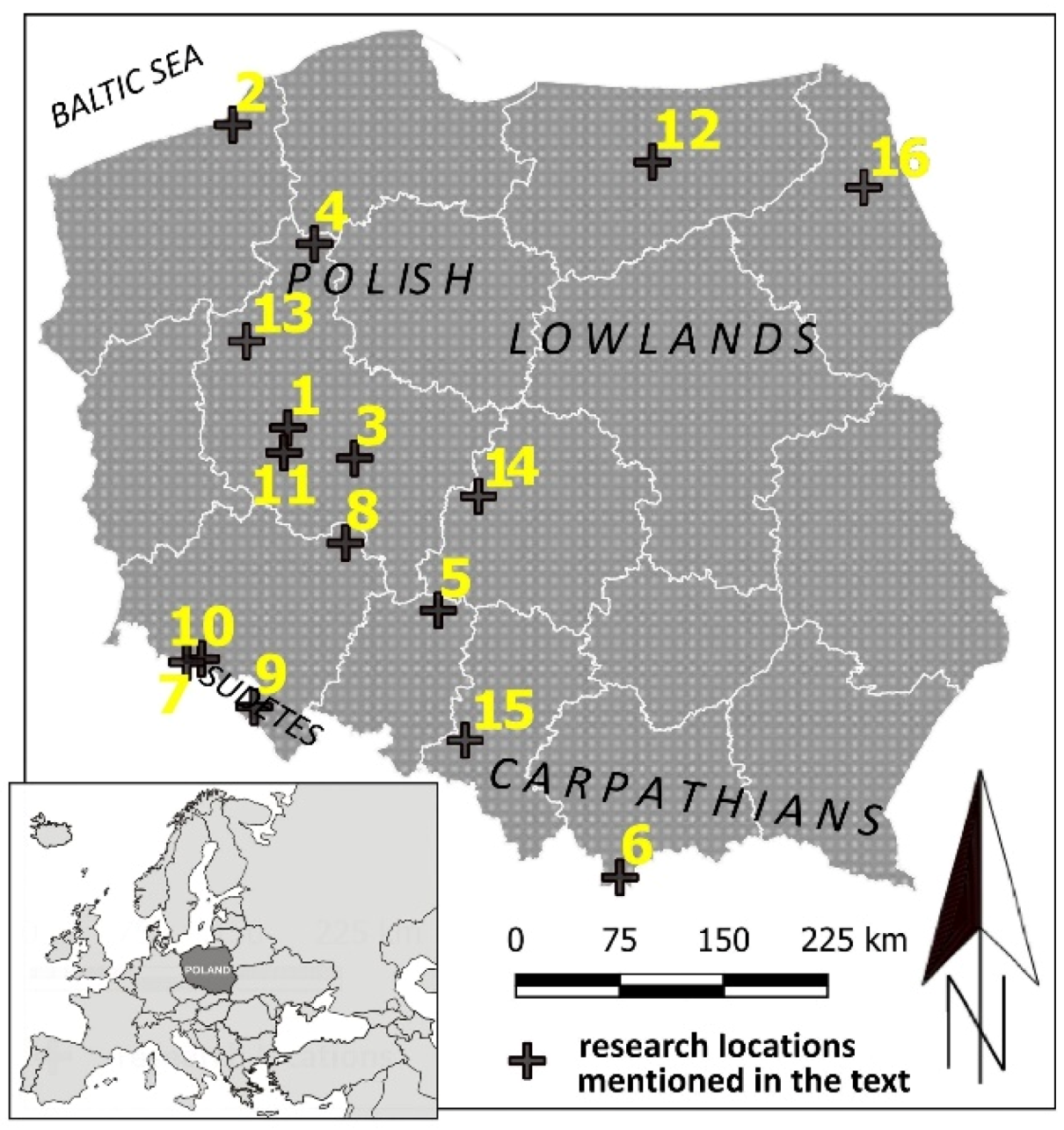
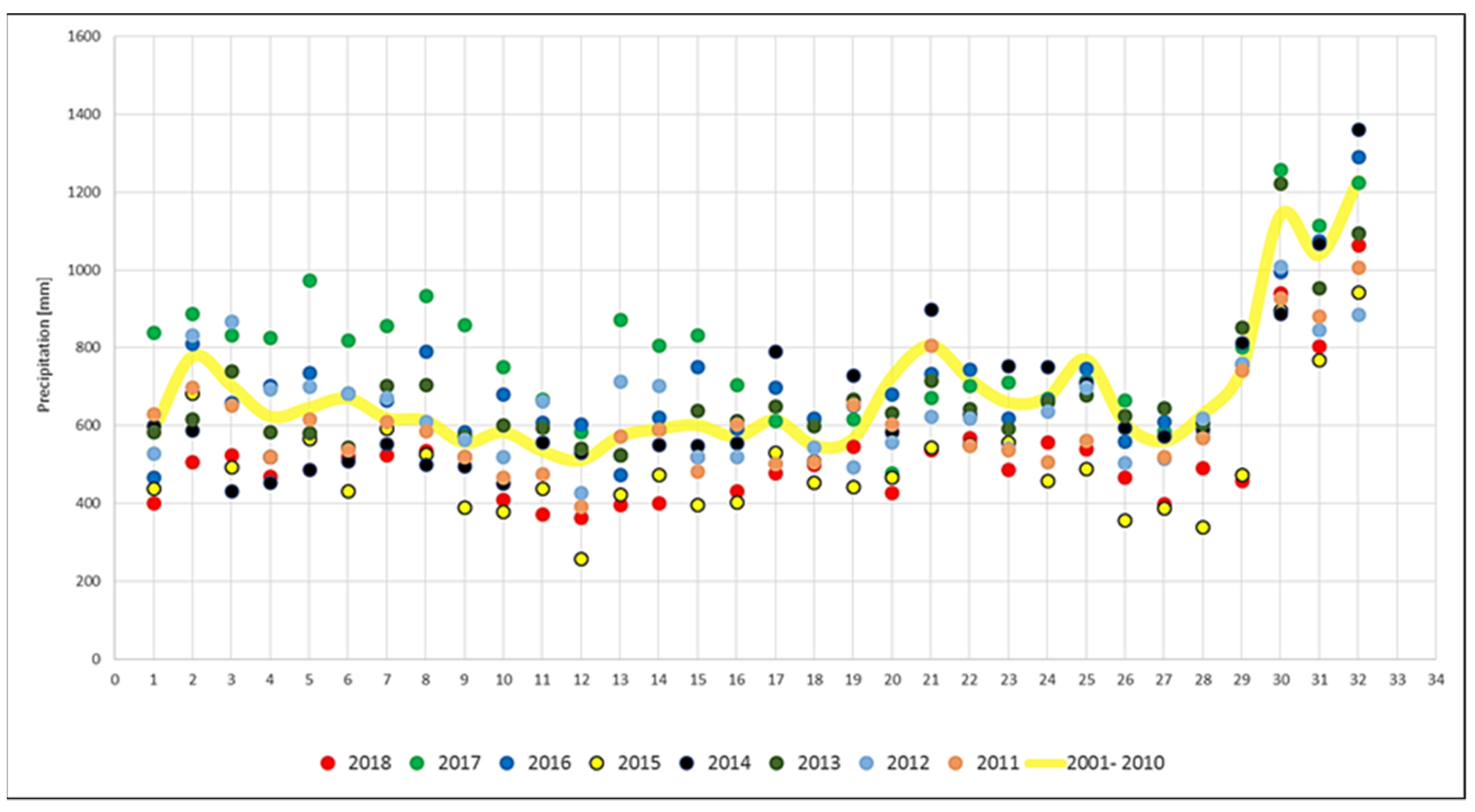
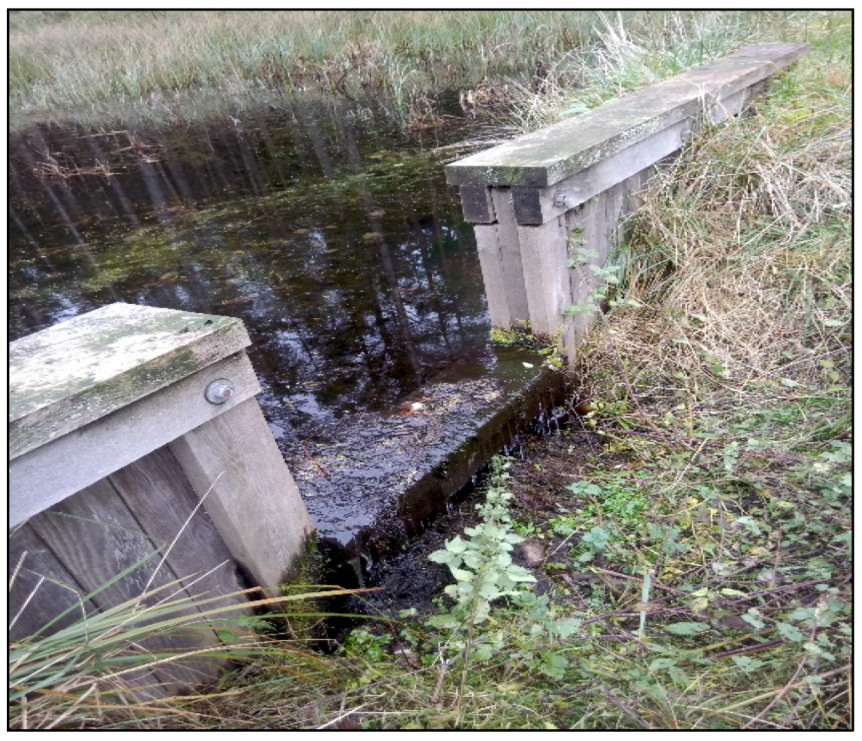
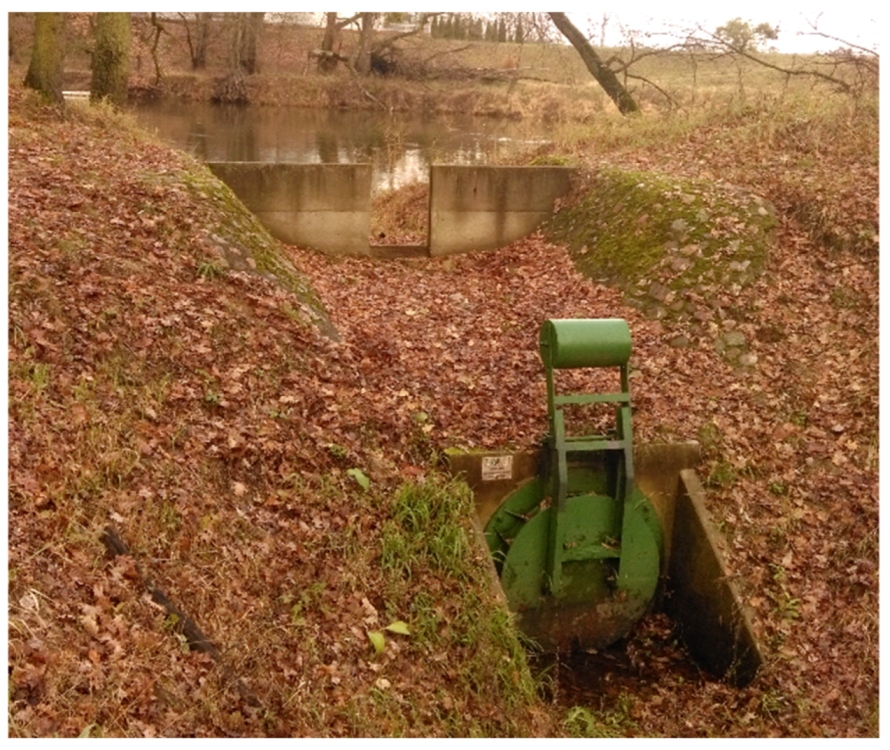
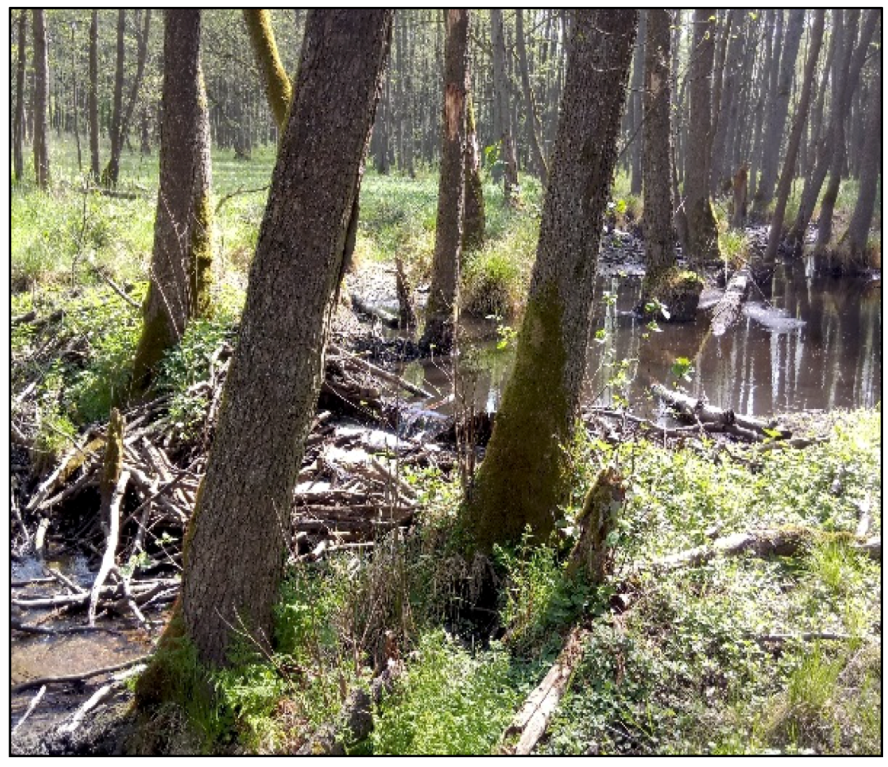
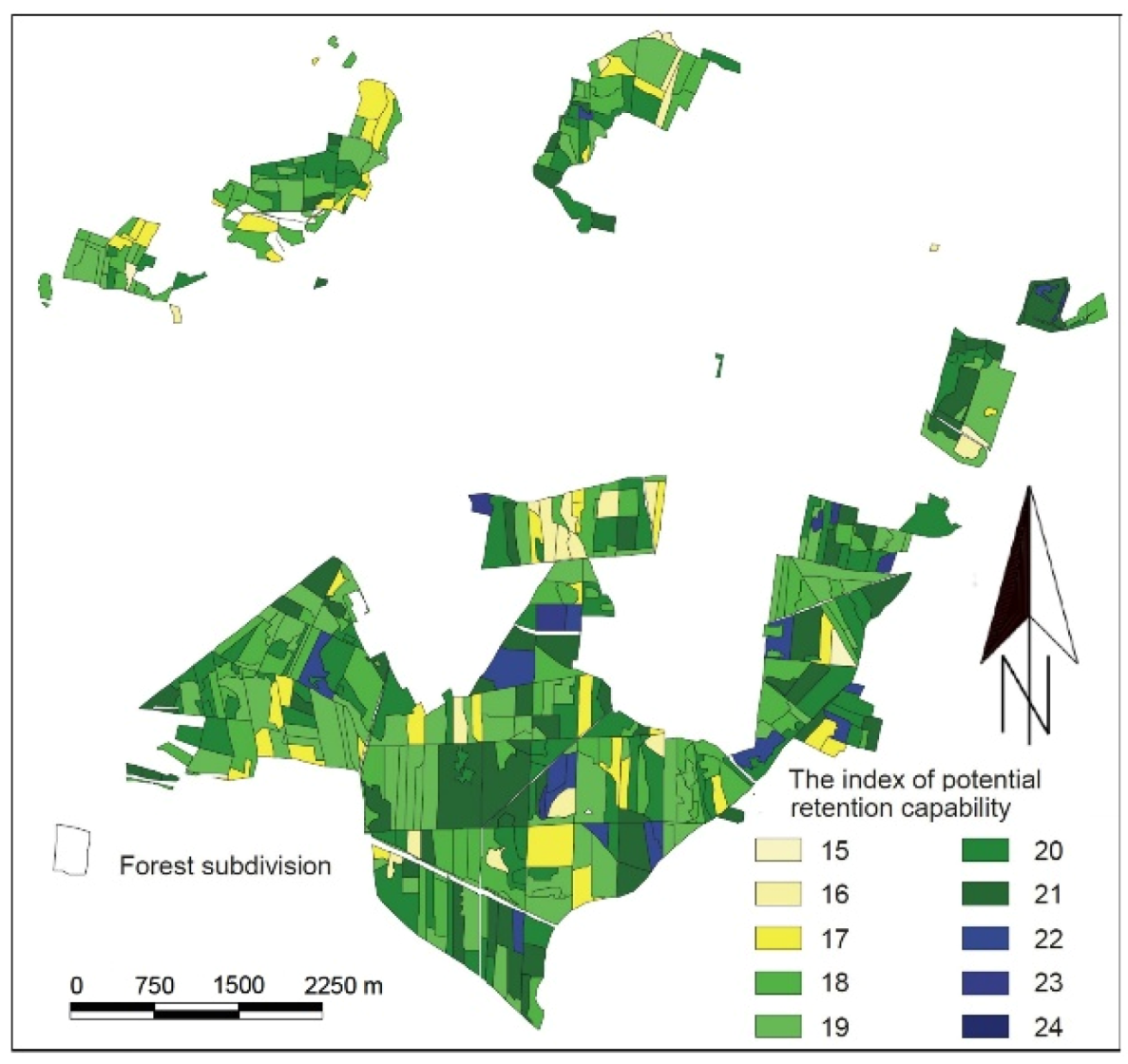
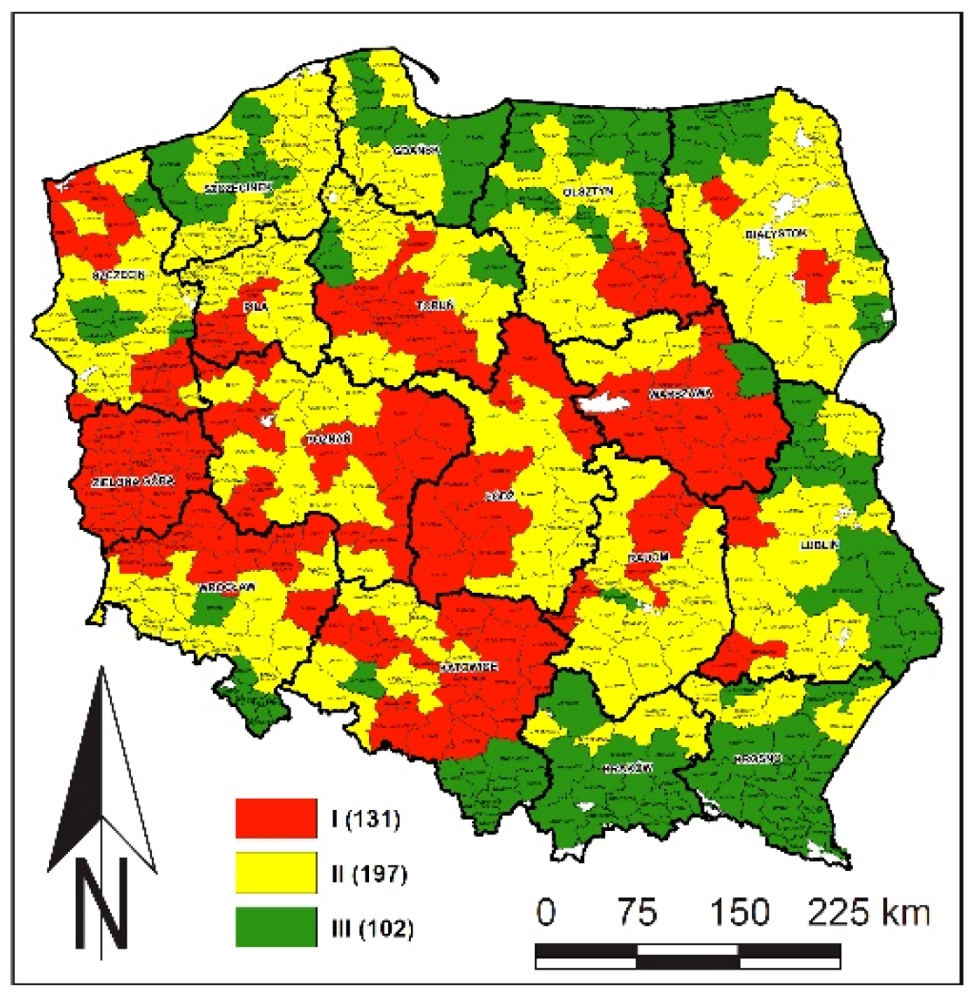

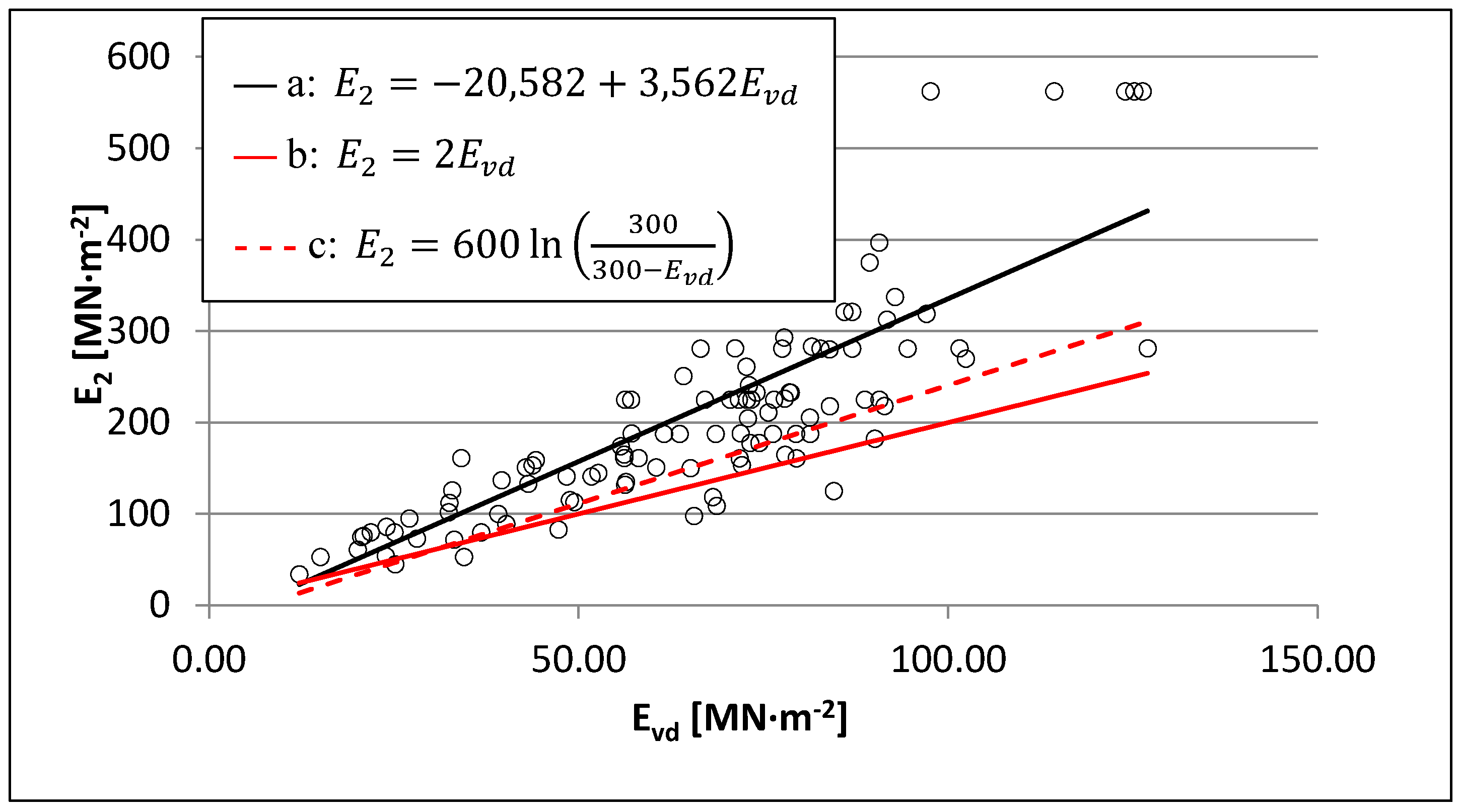
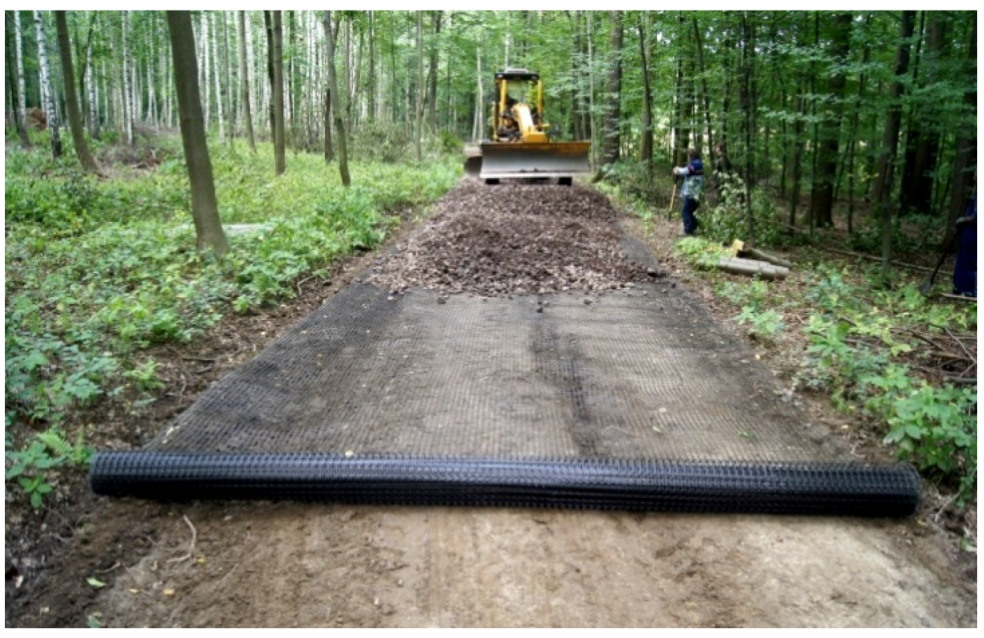

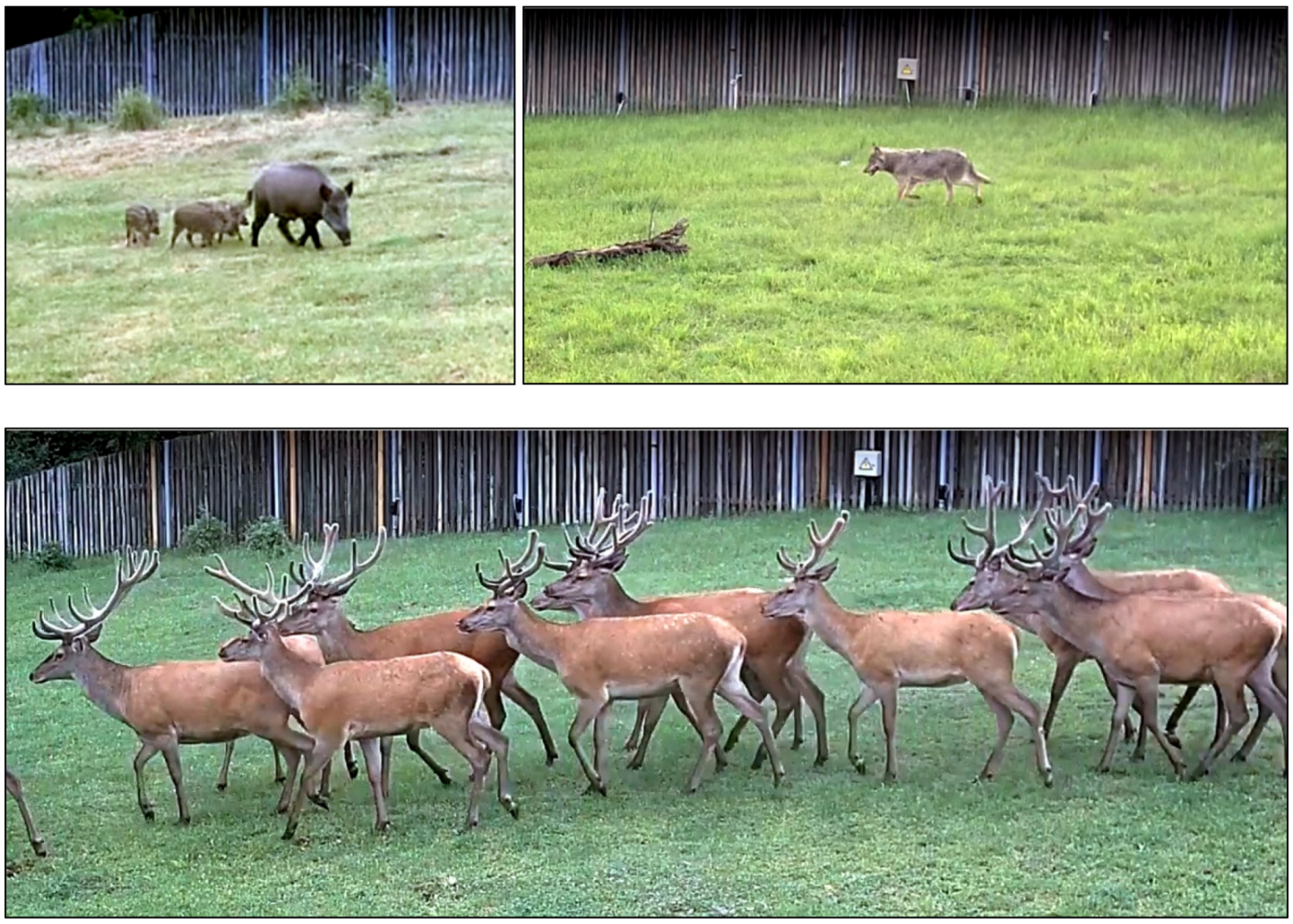
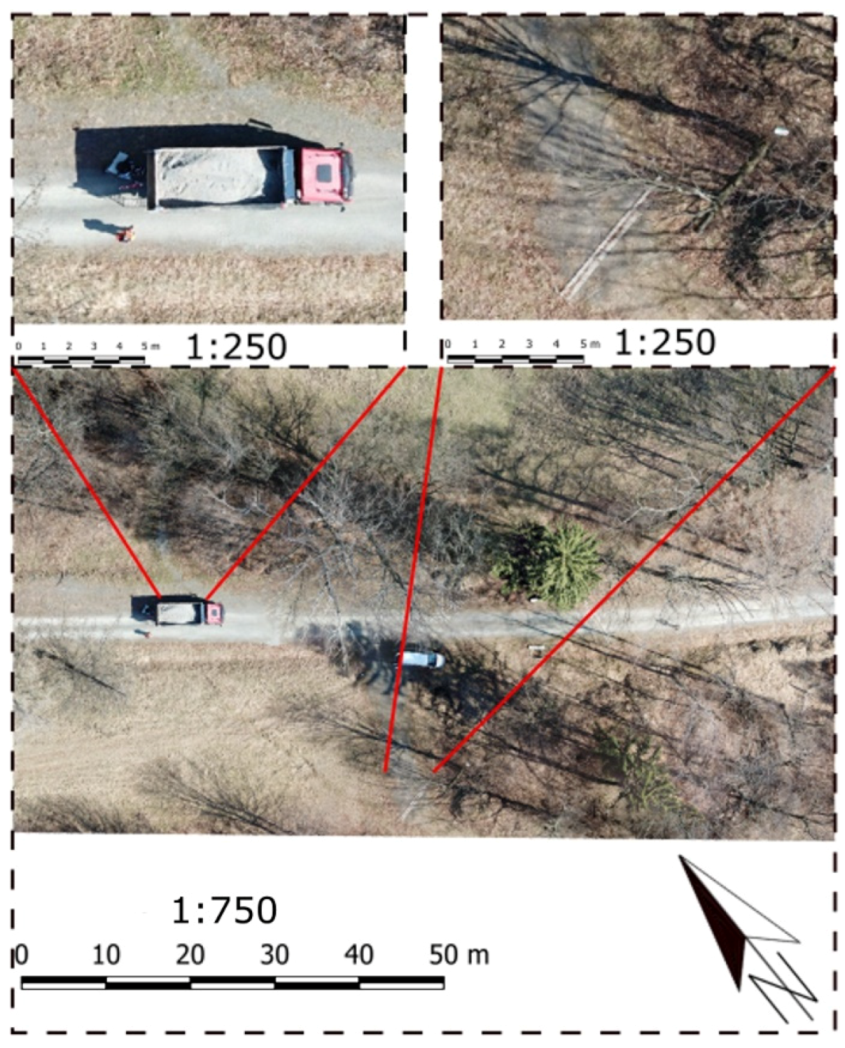
| 2017 | Red Deer | Wild Boar | Roe Deer | Fox | Badger | Raccoon Dog | Marten | Others | TOTAL | |||||
|---|---|---|---|---|---|---|---|---|---|---|---|---|---|---|
| Stag | Hind | Calf | Adult | Young | Buck | Doe | Calf | |||||||
| I | 541 | 448 | 303 | 456 | 498 | 20 | 38 | 11 | 238 | 4 | 2 | 2 | 12 | 2573 |
| II | 322 | 288 | 175 | 362 | 539 | 4 | 15 | 0 | 125 | 67 | 5 | 5 | 15 | 1922 |
| III | 726 | 346 | 107 | 798 | 490 | 30 | 19 | 2 | 134 | 105 | 14 | 3 | 13 | 2787 |
| IV | 435 | 394 | 2 | 417 | 346 | 35 | 10 | 0 | 203 | 93 | 2 | 6 | 3 | 1946 |
| V | 381 | 88 | 11 | 177 | 172 | 50 | 27 | 0 | 97 | 64 | 2 | 11 | 8 | 1088 |
| VI | 236 | 7 | 1 | 327 | 302 | 110 | 28 | 5 | 51 | 27 | 0 | 16 | 7 | 1117 |
| VII | 69 | 87 | 47 | 174 | 204 | 30 | 16 | 0 | 53 | 29 | 1 | 4 | 8 | 722 |
| VIII | 205 | 64 | 29 | 152 | 113 | 49 | 27 | 9 | 29 | 50 | 2 | 2 | 7 | 738 |
| IX | 267 | 74 | 38 | 427 | 258 | 27 | 34 | 27 | 40 | 32 | 3 | 0 | 25 | 1252 |
| X | 239 | 130 | 62 | 316 | 217 | 13 | 46 | 41 | 93 | 11 | 0 | 0 | 13 | 1181 |
| XI | 563 | 557 | 276 | 556 | 244 | 1 | 11 | 2 | 138 | 7 | 1 | 1 | 15 | 2372 |
| XII | 160 | 72 | 38 | 126 | 51 | 8 | 3 | 0 | 47 | 2 | 0 | 0 | 0 | 507 |
| TOTAL | 4144 | 2555 | 1089 | 4288 | 3434 | 377 | 274 | 97 | 1248 | 491 | 32 | 50 | 126 | 18,205 |
| 2018 | Red Deer | Wild Boar | Roe Deer | Fox | Badger | Raccoon Dog | Marten | Others | TOTAL | |||||
|---|---|---|---|---|---|---|---|---|---|---|---|---|---|---|
| Stag | Hind | Calf | Adult | Young | Buck | Doe | Calf | |||||||
| I | 269 | 319 | 151 | 323 | 181 | 36 | 40 | 0 | 156 | 7 | 5 | 1 | 10 | 1498 |
| II | 514 | 396 | 137 | 147 | 136 | 82 | 40 | 0 | 145 | 23 | 2 | 0 | 15 | 1637 |
| III | 330 | 248 | 72 | 259 | 424 | 149 | 34 | 0 | 151 | 38 | 0 | 6 | 29 | 1740 |
| IV | 423 | 174 | 52 | 199 | 477 | 123 | 13 | 0 | 77 | 54 | 1 | 3 | 49 | 1645 |
| V | 93 | 65 | 8 | 28 | 54 | 167 | 34 | 0 | 79 | 44 | 0 | 9 | 15 | 596 |
| VI | 133 | 15 | 9 | 128 | 123 | 181 | 8 | 0 | 112 | 29 | 0 | 6 | 16 | 760 |
| VII | 61 | 74 | 35 | 267 | 214 | 417 | 0 | 0 | 73 | 27 | 11 | 4 | 13 | 1196 |
| VIII | 100 | 241 | 139 | 192 | 380 | 265 | 4 | 1 | 69 | 60 | 12 | 3 | 12 | 1478 |
| IX | 280 | 198 | 84 | 476 | 842 | 199 | 24 | 3 | 75 | 90 | 7 | 4 | 34 | 2316 |
| X | 284 | 369 | 129 | 453 | 525 | 214 | 8 | 0 | 169 | 25 | 6 | 3 | 27 | 2212 |
| XI | 233 | 347 | 139 | 356 | 479 | 244 | 18 | 0 | 195 | 0 | 4 | 2 | 8 | 2025 |
| XII | 305 | 536 | 183 | 374 | 491 | 98 | 35 | 13 | 151 | 1 | 4 | 0 | 2 | 2193 |
| TOTAL | 3025 | 2982 | 1138 | 3202 | 4326 | 2175 | 258 | 17 | 1452 | 398 | 52 | 41 | 230 | 19,296 |
© 2020 by the authors. Licensee MDPI, Basel, Switzerland. This article is an open access article distributed under the terms and conditions of the Creative Commons Attribution (CC BY) license (http://creativecommons.org/licenses/by/4.0/).
Share and Cite
Czerniak, A.; Grajewski, S.; Krysztofiak-Kaniewska, A.; Kurowska, E.E.; Okoński, B.; Górna, M.; Borkowski, R. Engineering Methods of Forest Environment Protection against Meteorological Drought in Poland. Forests 2020, 11, 614. https://doi.org/10.3390/f11060614
Czerniak A, Grajewski S, Krysztofiak-Kaniewska A, Kurowska EE, Okoński B, Górna M, Borkowski R. Engineering Methods of Forest Environment Protection against Meteorological Drought in Poland. Forests. 2020; 11(6):614. https://doi.org/10.3390/f11060614
Chicago/Turabian StyleCzerniak, Andrzej, Sylwester Grajewski, Anna Krysztofiak-Kaniewska, Ewa E. Kurowska, Bernard Okoński, Małgorzata Górna, and Rafał Borkowski. 2020. "Engineering Methods of Forest Environment Protection against Meteorological Drought in Poland" Forests 11, no. 6: 614. https://doi.org/10.3390/f11060614
APA StyleCzerniak, A., Grajewski, S., Krysztofiak-Kaniewska, A., Kurowska, E. E., Okoński, B., Górna, M., & Borkowski, R. (2020). Engineering Methods of Forest Environment Protection against Meteorological Drought in Poland. Forests, 11(6), 614. https://doi.org/10.3390/f11060614





